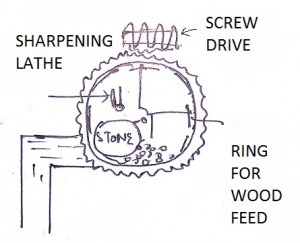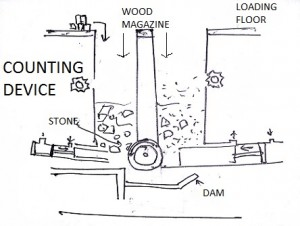This set of Pulp and Paper Multiple Choice Questions and Answers (MCQs) focuses on “Mechanical Pulping”.
1. Mechanical pulp is pulp produced by using only mechanical attrition to pulp lignocellulosic materials; no chemicals are used.
a) True
b) False
View Answer
Explanation: Mechanical pulp produced by using only mechanical attrition to the pulp’s lignocellulosic materials; no chemicals are used. Only water is used in the form of steam.
2. The total yield under the supervision of mechanical pulp is around?
a) 50-55%
b) 90-98%
c) 20-50%
d) 100%
View Answer
Explanation: The total yield under the supervision of mechanical pulp is around 90-98%. Lignin is stored back in the pulp; therefore high yields of pulp is obtained from the wood.
3. The use of mechanical pulps’ confined mainly to only non-permanent papers like newsprint and catalog paper.
a) True
b) False
View Answer
Explanation: The use of mechanical pulps is confined mainly to non-permanent papers like newsprint and catalog paper. Mech. Pulps constitute 20-25% of the world production and this is inc. due to the high yield of the process and inc. competition for the fiber resources.
4. Choose the correct Burr pattern going from right to left.

a) Thread, diamond, spiral and straight
b) Spiral, diamond, thread and straight
c) Spiral, thread, diamond and straight
d) Straight, diamond, thread and spiral
View Answer
Explanation: Burr pattern is used for sharpening pulp stones from groundwood production.
It is very important and shows the alignment of fiber.
5. What is the full form of PGW?
a) Pressure Group Window
b) Produced Ground Wood
c) Pre-recycled Ground Wood
d) Pressure Ground Wood
View Answer
Explanation: Pressure Ground Wood. By pressurizing the grinder with steam at temp. 105-125 degree celcius, the wood is heated and softened prior to the grinding process.
6. What is the full form of RMP?
a) Refiner Mechanical Pulp
b) Refined Microscopic Pulp
c) Radiated Microscopic Process
d) Refiner Mechanical Process
View Answer
Explanation: Refiner Mechanical Pulp is produced by disintegrating chips between revolving metal disks or plates with raised bars at atmospheric pressure.
7. Identify the grinder?

a) Hydraulic magazine grinder
b) Roberst’s ring grinder
c) Great northern grinder
d) Three pocket grinder
View Answer
Explanation: Grinder configurations used in the stone groundwood process.
8. Identify the grinder?

a) Hydraulic magazine grinder
b) Roberst’s ring grinder
c) Great northern grinder
d) Three pocket grinder
View Answer
Explanation: Grinder configurations utilized in the stone ground wood process.
9. Which of this is an important pulping variable?
a) Speed of the refiner plates
b) Fiber fragments
c) Pulp hydrogen grains
d) Coarse screens
View Answer
Explanation: The Rpm process was an important development in the history of mechanical pulping.
10. What is the full form of T.M.P?
a) Thermo mechanical pulp
b) Tri membrane process
c) Tribunal molecular pump
d) Thermochemical pulp
View Answer
Explanation: T.M.P. was developed about 10 years after R.M.P. and has become the most important mechanical pulping method.
Sanfoundry Global Education & Learning Series – Pulp and Paper.
To practice all areas of Pulp and Paper, here is complete set of 1000+ Multiple Choice Questions and Answers.
If you find a mistake in question / option / answer, kindly take a screenshot and email to [email protected]
- Check Chemical Engineering Books
- Practice Chemical Engineering MCQs
- Apply for Chemical Engineering Internship
